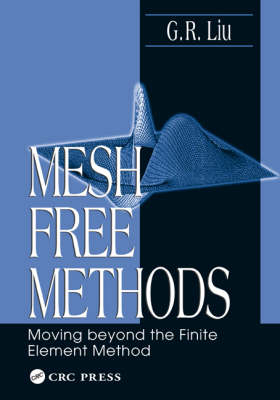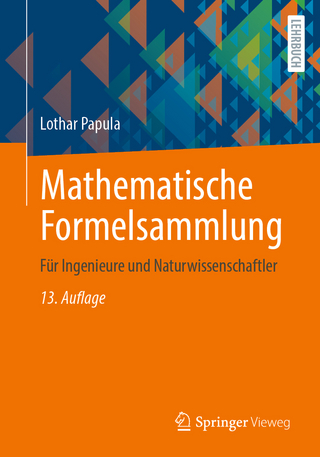
Mesh Free Methods
Crc Press Inc (Verlag)
978-0-8493-1238-0 (ISBN)
- Titel erscheint in neuer Auflage
- Artikel merken
As we attempt to solve engineering problems of ever increasing complexity, so must we develop and learn new methods for doing so. The Finite Difference Method used for centuries eventually gave way to Finite Element Methods (FEM), which better met the demands for flexibility, effectiveness, and accuracy in problems involving complex geometry. Now, however, the limitations of FEM are becoming increasingly evident, and a new and more powerful class of techniques is emerging.
For the first time in book form, Mesh Free Methods: Moving Beyond the Finite Element Method provides full, step-by-step details of techniques that can handle very effectively a variety of mechanics problems. The author systematically explores and establishes the theories, principles, and procedures that lead to mesh free methods. He shows that meshless methods not only accommodate complex problems in the mechanics of solids, structures, and fluids, but they do so with a significant reduction in pre-processing time.
While they are not yet fully mature, mesh free methods promise to revolutionize engineering analysis. Filled with the new and unpublished results of the author's award-winning research team, this book is your key to unlocking the potential of these techniques, implementing them to solve real-world problems, and contributing to further advancements.
INTRODUCTION
What is Mesh Free Method
Why MFree Method
The Idea of MFree Method
Outline of the Book
MESH FREE METHODS FOR ENGINEERING PROBLEMS
Physical Phenomena in Engineering
Solution Procedure
Modeling of the Geometry
Node Generation
Shape Function Creation
Property of Material or Media
Boundary, Initial and Loading Conditions
Simulation
Visualization
MFree Method Procedure
Remarks
BRIEFING ON MECHANICS
Briefing on Mechanics for Solids and Structures
Equations for Three-Dimensional Solids
Equations for Two-Dimensional Solids
Equations for Truss Members
Equations for Beams
Equations for Plates
Remarks
Captions of Figures
PRINCIPLES FOR WEAK FORMS
Strong and Weak Forms
Hamilton's Principle
Constrained Hamilton's Principle
Galerkin Weak Form
Constrained Galerkin Weak Form
Minimum Total Potential Energy Principle
Weighted Residual Method
Weighted Residual Method with Constraints
Points to Note
Remarks
MFREE SHAPE FUNCTION CONSTRUCTION
Overview
Smoothed Particle Hydrodynamics Approach
Reproducing Kernel Particle Method
Moving Least Squares Approximation
Point Interpolation Method
Radial PIM
Radial PIM with Polynomial Reproduction
Polynomial PIM with Coordinate Transformation
Matrix regularization Algorithm
Comparison Study via Examples
Compatibility of MFree Function Approximation
Features of MFree Shape Functions
Other Methods
Remarks
ELEMENT FREE GALERKIN METHOD
EFG Formulation with Lagrange Multipliers
EFG with Penalty Method
Constrained Moving Least Square Method for EFG
EFG for Nonlinear Elastic Problems
Summary
MESHLESS LOCAL PETROV-GALERKIN METHOD
MLPG Formulation
MLPG for Dynamic Problems
Remarks
POINT INTERPOLATION METHODS
Point Interpolation Method (PIM)
Application of PIM to Foundation Consolidation Problem
Radial Point Interpolation Method (RPIM)
Local Point Interpolation Method (LPIM)
Examples of Static Problems
Application of LRPIM to Diffusion Equations
Comparison Study
Summary
MESH FREE METHODS FOR FLUID DYNAMIC PROBLEMS
Introduction
Smoothed Particle Hydrodynamics Method
Local Petrov-Galerkin Method
Local Radial Point Interpolation Method
MESH FREE METHODS FOR BEAMS
PIM Shape Function for Thin Beams
Elastostatic Analysis of Thin Beams
Buckling Analysis of Thin Beam (Eigenvalue Problem)
Free Vibration Analysis of Thin Beams (Eigenvalue Problem)
Forced Vibration Analysis of Thin Beams (Time Dependent Problem)
Timoshenko Beams
Remarks
MESH FREE METHODS FOR PLATES
EFG Method for Thin Plates
EFG Method for Thin Composite Laminates
EFG Method for Thick Plates
RPIM for Thick Plates
MLPG for Thin Plates
Remarks
MESH FREE METHODS FOR SHELLS
EFG Method for Spatial Thin Shells
EFG Method for Thick Shells
RPIM for Thick Shells
Summary
BOUNDARY MESH FREE METHODS
BPIM Using Polynomial Basis
BPIM Using Radial Function Basis
Remarks
MESH FREE METHODS COUPLED WITH OTHER METHODS
Coupled EFG/BE Method
Coupled EFG and Hybrid BEM
Coupled MLPG/FE/BE Methods
Remarks
IMPLEMENTATION ISSUES
Definition of the Support Domain or Influence Domain
Triangular Mesh and Size of Influence Domain
Node Numbering and Bandwidth of the Stiffness Matrix
**Bucket Algorithm for Node Searching
Relay Model for Domains with Irregular Boundaries
Adaptive Procedure Based on Background Cells
Strategy for Local Adaptive Refinement
Remarks
MFREE2D©
Overview
Techniques used in MFree2D©
Pre-processing in MFree2D©
Post-processing in MFree2D©
| Erscheint lt. Verlag | 29.7.2002 |
|---|---|
| Zusatzinfo | 85 Halftones, black and white; 133 Tables, black and white; 489 Illustrations, black and white |
| Verlagsort | Bosa Roca |
| Sprache | englisch |
| Maße | 178 x 254 mm |
| Gewicht | 1397 g |
| Themenwelt | Mathematik / Informatik ► Mathematik ► Angewandte Mathematik |
| Technik ► Bauwesen | |
| ISBN-10 | 0-8493-1238-8 / 0849312388 |
| ISBN-13 | 978-0-8493-1238-0 / 9780849312380 |
| Zustand | Neuware |
| Informationen gemäß Produktsicherheitsverordnung (GPSR) | |
| Haben Sie eine Frage zum Produkt? |
aus dem Bereich



